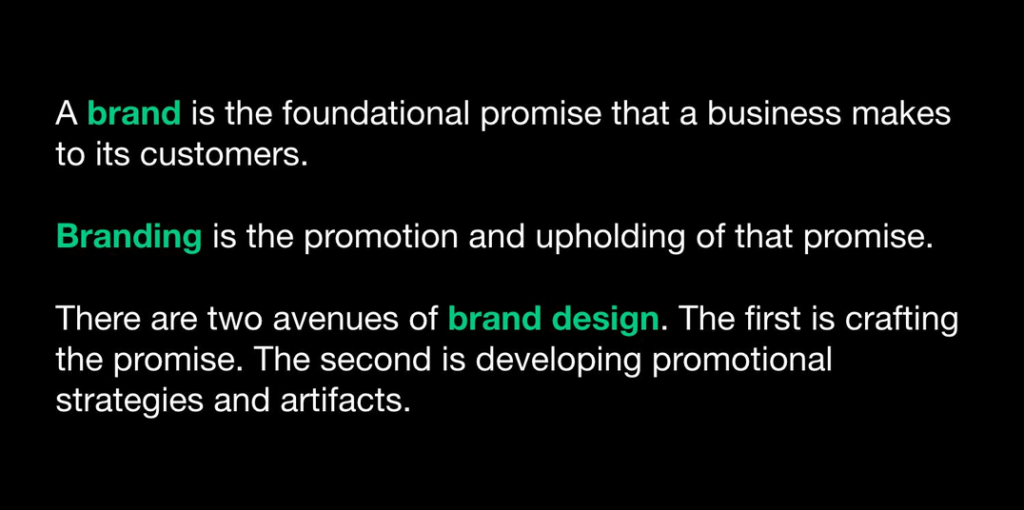Branding Is Dead – Not
 I saw an article headline the other day saying branding was dead. Then, in the first sentence, it said (wait for it)… it’s not dead, “it’s stronger than ever.” Okay. Geez, I hate getting clickbaited like that. But the writer was out to make a point — which he began doing in the subhead — so I quickly forgave him. His point was that customer experience (CX) is what matters most today, for any brand. I definitely wanted to read on. Does this somehow displace the whole notion of branding, or has it in fact become the very purpose or essence of it?
I saw an article headline the other day saying branding was dead. Then, in the first sentence, it said (wait for it)… it’s not dead, “it’s stronger than ever.” Okay. Geez, I hate getting clickbaited like that. But the writer was out to make a point — which he began doing in the subhead — so I quickly forgave him. His point was that customer experience (CX) is what matters most today, for any brand. I definitely wanted to read on. Does this somehow displace the whole notion of branding, or has it in fact become the very purpose or essence of it?
I’ve studied branding for three-plus decades, and practiced it, for more great clients than I can count. As you may know, I’ve also written about it a lot — some examples here:
• Naming Your Startup: Seven Tips for Success
• The Only Thing Standing Between You and Commodity Pricing
• What Is a Brand Story? And Why Do You Need One?
• What You Need to Know About ‘Brand Equity’ — and Why Accountants Are the Problem
So, I was eager to dig into the article to see how the writer was going to make his case. The article (written by a designer) begins with a discussion about definitions — first, that of user experience (UX) and then its newer cousin, customer experience. Knowing the difference between these two is important, he says. Terms get thrown around in the branding space a lot, which can cause confusion. You need to choose your words carefully when writing about or discussing the topic of branding. I like that he lays that groundwork at the outset. Definitions matter, which is reflected in some of my previous writings (see above). So, what is the difference between these two terms?
• User experience (UX) “typically refers to optimizing the quality of the interactions between a user and a digital product.” Think information architecture, interaction design, content strategy, empathy, visual design, user research, usability.
• Customer experience (CX) is “focused on improving a person’s experience with a company, at all touchpoints.” Think brand reputation, customer service, empathy, value, sales, advertising, marketing, product delivery, operations.
The article put it this way: “The two disciplines are so closely related, their differences so murky, that they are sometimes used interchangeably. Originally, the UX umbrella was meant to cover every facet of an individual’s interplay with a company, but our distinctly digital age complicated things. [Emphasis mine.] UX is now associated with the quality of interactions between a user and a digital product, and CX design has come to encompass all the other encounters that a person has with a business.” The writer emphasizes that last point: “All other encounters—the scope is enormous.”
So, what impact does brand design have on the customer experience? “At the very least,” says the writer, “it seems like brand designers ought to be aware of all the ways in which their clients interact with customers.” Amen!
Definitions That Illuminate
I love it when I run into explanations of branding that I find simple and fresh — new ways to help people (especially startup founders) better understand a subject that can often be quite foreign to them, or that they only think they understand. The author of the article presented some good ones that are worth sharing — shown in this graphic:
So, How Does the Process Start for a New Brand?
The article goes on to talk about how brand designers first look at what makes a company special. What do they do best? How are they different from the competition? Why should anyone care? After carefully considering these things, good brand designers define a promise between the company and the customer.
This brand promise should not be a lot of words — in fact, brevity is key. Think poetry. Words that sing. The brand promise has to “permeate every aspect of a company’s activities.” Think of it as a common goal, an inspiration for everyone involved in the company to move “with a shared sense of mission.”
With planning and preparation like this, creating a brand today can truthfully address all aspects of the way the customer will experience it.
I like the way the writer presented his case about modern branding. He ended his article this way:
“Branding isn’t dead, but the days of crafting brands without incorporating a CX design mindset are drawing to a close.”
Truth!
Got a branding question or need? Hit me up! Click “Contact” in the upper right.

